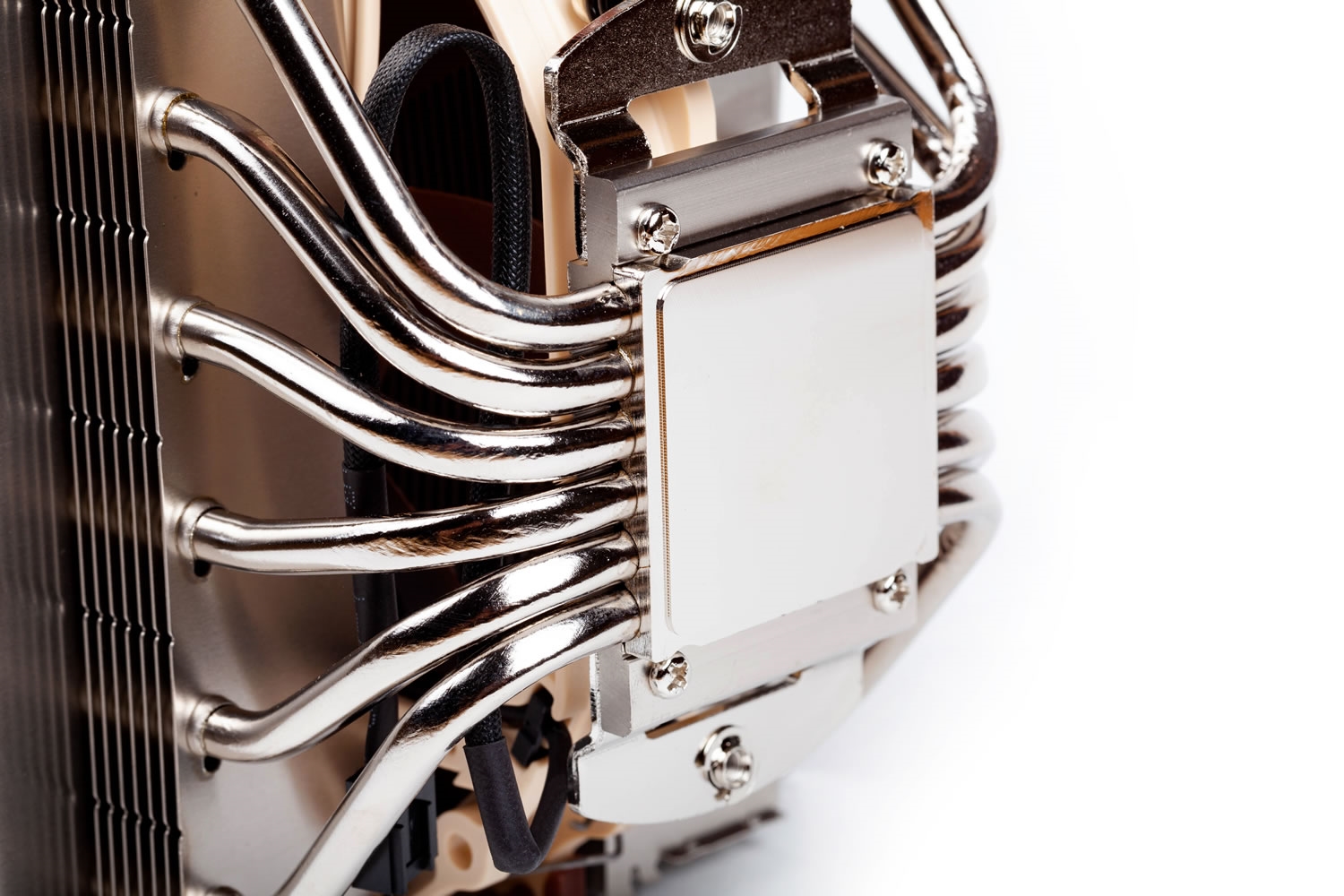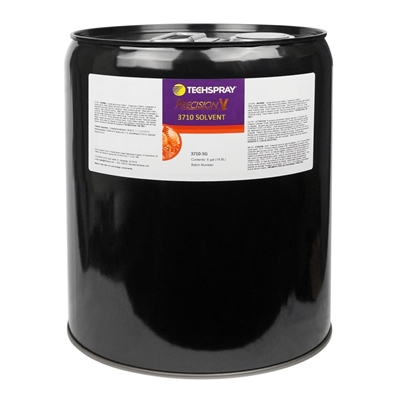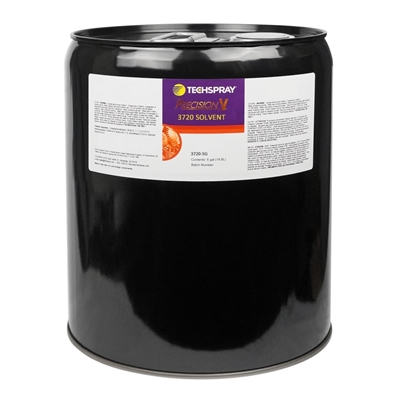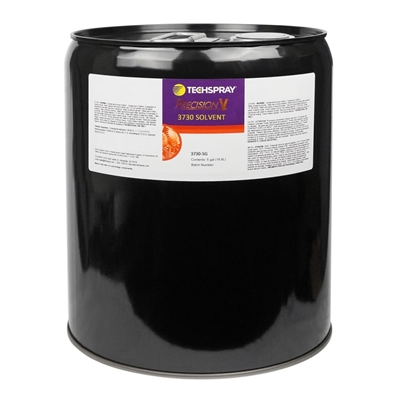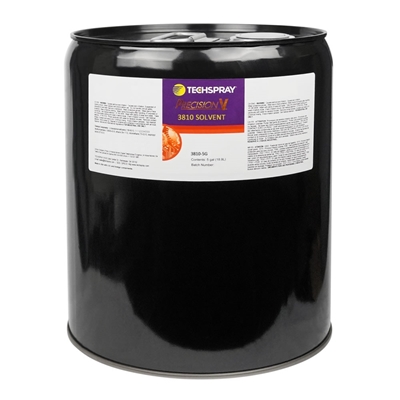Heat dissipation is a significant challenge in electronics, as excessive heat can degrade performance and even damage critical components. Heat transfer fluid plays a vital role in efficiently managing this heat. The fluid's high thermal conductivity allows it to rapidly absorb heat from server components, ensuring uniform cooling throughout the system. By coming into direct contact with the servers, the fluid eliminates the thermal resistance associated with air cooling, leading to more efficient heat dissipation.
Why Use Techspray Heat Transfer Fluid?
Heat transfer fluid can remove more heat compared to air due to its higher heat capacity. This property enables it to absorb and transport larger quantities of heat without experiencing significant temperature increases. As a result, data centers employing immersion cooling can maintain servers at lower operating temperatures, reducing the risk of overheating and improving system reliability.
The dielectric properties of heat transfer fluid enhance electrical safety in data centers. The fluid acts as an insulator, preventing electrical conductivity and the risk of short circuits. This property eliminates the need for additional insulation materials, simplifying the infrastructure and reducing the overall environmental impact.
Furthermore, heat transfer fluid is recyclable, making it an environmentally friendly choice. Unlike air cooling systems that require large amounts of electricity to continually cool and condition the air, immersion cooling systems can operate for extended periods without fluid replacement. When the fluid eventually reaches the end of its useful life, it can be safely disposed of or recycled, minimizing waste and reducing the carbon footprint of data centers.
Heat transfer fluid plays a pivotal role in electronic immersion cooling, ensuring efficient heat dissipation, improving performance and reliability, and enhancing sustainability. By leveraging the high thermal conductivity and heat capacity of the fluid, data centers can maintain optimal operating temperatures, mitigating the risk of overheating and component failure. Moreover, the use of heat transfer fluid enables significant energy savings, making data centers more sustainable and environmentally friendly. As the demand for computing power continues to grow, embracing immersion cooling and recognizing the importance of heat transfer fluid will be essential for the future of data centers.
Techspray Thermal Transfer Fluids offer many advantages:
- Enhanced Heat Dissipation – Techspray heat transfer fluids have excellent thermal conductivity, which enables efficient heat dissipation from the power electronics. The fluid quickly absorbs heat from the electronic components, carrying it away to a heat exchanger or cooling system.
- Efficient Heat Transfer – The right heat transfer fluid is critical for effective cooling. The fluid should have high thermal conductivity, allowing it to efficiently absorb heat from the electronic components. By facilitating rapid heat transfer, Techspray Thermal Transfer Fluid enables the cooling system to maintain lower temperatures and prevent thermal throttling.
- Improved Temperature Regulation - Immersion cooling with heat transfer fluids provides more precise temperature regulation compared to traditional air cooling methods. Techspray Thermal Transfer Fluid surrounds the electronics and removes heat uniformly, preventing hotspots and maintaining a more stable temperature across the components.
- Higher Heat Capacity – Techspray heat transfer fluids have a higher heat capacity than air, meaning they can absorb and store more heat energy. This allows for greater thermal buffering, ensuring that the temperature remains within safe operating limits even during peak loads or transient conditions.
- Dielectric Properties – Techspray heat transfer fluids have high dielectric strength. Power electronics immersion cooling involves submerging the components directly in a dielectric fluid to prevent electrical short circuits. The heat transfer fluid used should have excellent dielectric properties to insulate the electronic components and prevent any electrical conduction between them. This helps ensure the safety of the system and protects against potential damage due to electrical faults.
- High Boiling Point - Techspray heat transfer fluids have high boiling points, which prevents vaporization and further enhances cooling performance. These fluids can absorb a significant amount of heat before reaching their boiling point, leading to efficient heat dissipation. The boiling process can also facilitate convective cooling as the vapor rises to the surface and condenses, releasing heat in the process.
- Chemical Compatibility - Techspray heat transfer fluid is chemically compatible with the electronic components and the materials used in the cooling system. It should not cause corrosion or degradation of the components, coolant circulation system, or any other related equipment. Compatibility ensures the longevity and reliability of the cooling system.
Overall, the heat transfer fluid plays a vital role in power electronics immersion cooling by efficiently absorbing and removing heat from electronic components, providing electrical insulation, and ensuring safe and reliable operation of the cooling system. The choice of the appropriate fluid depends on various factors such as thermal conductivity, dielectric properties, boiling point, chemical compatibility, and environmental considerations.
Data Center Immersion Cooling

Data centers are the backbone of the digital age, powering the storage, processing, and transfer of vast amounts of information. As the demand for higher computing power and energy efficiency increases, traditional air cooling methods in data centers face limitations. Immersion cooling, a technique that involves submerging servers in a dielectric heat transfer fluid, has emerged as a promising solution.
Heat transfer fluid (HTF) plays a crucial role in data center immersion cooling systems. Immersion cooling is a technique where servers or computer components are submerged in a non-conductive liquid to dissipate heat more efficiently than traditional air cooling methods. The HTF serves as the medium through which heat from the electronic components is transferred and carried away.
Data centers consume massive amounts of energy, and cooling represents a significant portion of their power usage. Immersion cooling with heat transfer fluid offers a more sustainable alternative to conventional cooling methods. The efficient heat dissipation enabled by the fluid minimizes the energy required for cooling, resulting in substantial energy savings. Lower operating temperatures also allow for more efficient server operation, reducing power consumption.
Here's how HTF is typically used in data center immersion cooling:
- Selection of HTF - A suitable heat transfer fluid is chosen based on its specific heat capacity, thermal conductivity, compatibility with electronics, and other factors. Common choices include mineral oils, synthetic fluids, or engineered dielectric fluids that do not conduct electricity.
- Submersion of components - The servers or individual components such as processors or graphics cards are immersed in the HTF-filled tanks or baths. The HTF completely surrounds the components, making direct contact with their surfaces.
- Heat absorption - As the electronic components operate, they generate heat. The HTF comes into contact with the hot surfaces, absorbing the thermal energy from the components.
- Heat transfer - The HTF, now carrying the absorbed heat, flows away from the hot components to cooler areas of the immersion system. This can be achieved through natural convection, where the density differences between the heated and cooled HTF cause it to circulate, or through the use of pumps.
- Heat dissipation - Once the HTF reaches a heat exchanger or cooling unit, the heat is transferred from the HTF to another cooling medium, such as water or air. The cooling medium absorbs the heat from the HTF and carries it away from the system.
- HTF circulation - After the heat is dissipated, the cooled HTF is recirculated back to the immersion tanks, completing the cycle. This ensures that the HTF remains in contact with the electronic components, allowing efficient heat transfer to continue.
The use of Techspray Heat Transfer Fluid in immersion cooling offers several advantages, including higher heat transfer rates, reduced energy consumption, improved cooling efficiency, and the ability to accommodate high-density computing environments. It helps maintain lower operating temperatures for the electronic components, enhancing their performance and lifespan.
By effectively dissipating heat, heat transfer fluid enhances the overall performance and reliability of data centers. The immersion cooling technique eliminates hotspots that can arise in traditional air-cooled systems, where cool air often bypasses certain areas or becomes trapped. In contrast, heat transfer fluid surrounds every component, ensuring uniform cooling and preventing temperature variations that can lead to performance degradation or premature component failure.
Additionally, the reduced operating temperatures achieved through immersion cooling can extend the lifespan of servers. High temperatures accelerate the aging process of electronic components, shortening their operational life. By keeping servers cool, heat transfer fluid helps mitigate this issue, contributing to increased equipment durability and reduced maintenance costs.
Techspray offers many advantages for data center immersion cooling:
- Higher computing density - Traditional air cooling methods impose limitations on computing density due to thermal constraints. With immersion cooling, servers can be densely packed together since the heat is efficiently transferred away from the components. This allows data centers to maximize their computing capacity within a given physical space.
- Noise reduction - Air cooling systems generate noise through the operation of fans and other cooling equipment. Immersion cooling eliminates the need for these components, resulting in a quieter environment. This can be advantageous in settings where noise reduction is important, such as offices or residential areas near data centers.
- Hardware protection - Immersion cooling can provide additional protection for electronic components. By submerging the servers and other hardware in a non-conductive and non-corrosive HTF, the risk of damage from dust, humidity, and corrosive elements is minimized. This can lead to increased hardware lifespan and reduced maintenance costs.
- Scalability and modularity - Immersion cooling is highly scalable and modular, making it easier to deploy and expand data center infrastructure. The submerged servers can be easily added or removed, and the cooling infrastructure can be adapted to meet changing computational needs. This flexibility allows data center operators to scale their operations efficiently and respond to evolving requirements.
Overall, immersion cooling offers improved heat dissipation, energy efficiency, higher computing density, noise reduction, hardware protection, and scalability compared to traditional air cooling methods. These advantages make it an attractive option for data center operators looking to optimize their cooling systems and improve overall operational efficiency.
Power Electronics Immersion Cooling in Aerospace & Medical Equipment

Heat transfer fluids are commonly used in immersion cooling systems for power electronics, including military equipment. Immersion cooling is a technique where the electronic components are submerged in a dielectric fluid, also known as a heat transfer fluid, to dissipate heat efficiently. Heat transfer fluid serves as a cooling medium to remove heat generated by power electronic components. It has excellent thermal properties and high heat capacity, allowing it to absorb heat efficiently.
Advantages of Techspray Thermal Transfer Fluids for power electronics cooling:
- Reduced Thermal Resistance - Immersion cooling eliminates the need for thermal interface materials, such as thermal paste or pads, which can introduce additional thermal resistance. Direct contact between the electronic components and the heat transfer fluid minimizes thermal barriers and enhances heat transfer efficiency.
- Lower Noise Levels - Immersion cooling eliminates the need for traditional air cooling fans, reducing the overall noise generated by the cooling system. This is particularly beneficial in applications where low noise levels are required.
- Increased Reliability - By maintaining lower operating temperatures, immersion cooling with heat transfer fluids can improve the reliability and longevity of power electronics. Cooler temperatures help reduce thermal stress, mitigate the risk of thermal-induced failures, and extend the lifespan of the components.
- Space-Efficient - Immersion cooling allows for higher power density and compact designs. By eliminating the need for bulky air cooling systems, the overall size of the power electronic system can be reduced, enabling more efficient use of space in applications with limited physical footprint requirements.
- Corrosion Protection - Military equipment often operates in harsh environments, and heat transfer fluids used in immersion cooling systems are designed to provide corrosion protection for the submerged components. They are formulated to resist degradation, oxidation, and other detrimental effects caused by exposure to moisture or contaminants.
It's important to note that the selection of the heat transfer fluid should be based on compatibility with the materials used in the power electronics, as well as the specific operating conditions and thermal management requirements of the application.
Fluid Circulation: closed-loop system. It flows through heat exchangers, where the heat absorbed from the power electronics is transferred to another cooling medium, such as air or water. This process removes the heat from the system and allows for further heat dissipation.
By utilizing heat transfer fluids in immersion cooling systems, power electronics, like in military and medical equipment, can benefit from improved heat dissipation, temperature regulation, and protection against environmental factors. These advantages contribute to enhanced performance, reliability, and longevity of the power electronics components, especially in demanding military applications.
Temperature Control for Semiconductor Fabrication

Heat transfer fluids play a critical role in semiconductor fabrication processes by maintaining precise and uniform temperatures throughout various production steps. Semiconductors are highly sensitive to temperature, and excessive heat can damage or alter their properties, affecting performance and reliability. Heat transfer fluids help maintain precise and controlled temperatures throughout the fabrication process.
Here are a few common ways heat transfer fluids are used in semiconductor fabrication:
- Temperature control in etching and deposition - During processes like chemical vapor deposition (CVD) or plasma etching, heat transfer fluids are used to regulate the temperature of the reaction chamber. By circulating a heat transfer fluid through the chamber, the fluids absorb and carry away excess heat, preventing overheating of the wafer or other components.
- Cooling in photolithography - In photolithography, a process used to create intricate patterns on semiconductor wafers, heat transfer fluids help cool the photomask and the exposure tool. This prevents thermal expansion and ensures precise alignment and focus during the exposure step.
- Heat removal during wafer bonding - Heat transfer fluids are often employed during wafer bonding processes, where two or more wafers are joined together. The fluid aids in heat removal, preventing temperature differentials that could lead to stress-induced defects or warping of the wafers.
- Thermal management in wafer testing - Heat transfer fluids are utilized in wafer testing to control the temperature of the wafer while electrical tests are performed. Maintaining a stable temperature ensures accurate measurements and minimizes the impact of temperature variations on device performance.
- Temperature control in rapid thermal processing (RTP) - RTP involves quickly heating and cooling wafers to achieve specific material modifications or annealing effects. Heat transfer fluids are employed to precisely control the wafer's temperature during these rapid thermal cycles.
In all these applications, heat transfer fluids act as an intermediary medium between the heat source or heat-generating component and the cooling system. They efficiently carry away the excess heat, maintaining optimal temperatures for semiconductor processing, and ensuring high product quality and yield.
Techspray heat transfer solvents are specifically designed to meet the requirements of semiconductor manufacturing and offer several advantages over aqueous coolants like deionized (DI) water. Advantages for semiconductor fabrication:
- Stability and Consistent Performance - Techspray Heat Transfer Fluids are engineered to remain stable over time, ensuring consistent performance throughout the manufacturing process. This stability helps maintain uniform temperatures, minimizing temperature variations that could impact yield and product quality.
- Wide Operating Temperature Range - Techspray heat transfer solvents offer a wider operating temperature range compared to aqueous coolants. This versatility allows for precise temperature control across different stages of semiconductor fabrication, accommodating the specific temperature requirements of each step.
- Reduced Maintenance - Heat transfer fluids from Techspray generally require less maintenance compared to aqueous coolants like DI water. They have lower water content, reducing the risk of corrosion or mineral deposition in the cooling system. This can lead to decreased downtime and maintenance costs associated with system cleaning and repairs.
- Non-Damaging to Electronic Equipment and Wafers - One significant advantage of Techspray Heat Transfer Fluids is that they do not damage electronic equipment or wafers in the event of leaks or other failures. Unlike aqueous coolants, which can be conductive and cause damage to sensitive electronics, Techspray solvents are specifically formulated to be non-conductive and safe for use in semiconductor manufacturing environments.
Overall, Techspray heat transfer solvents provide a reliable and effective solution for maintaining precise and uniform temperatures in semiconductor fabrication. Their stability, wide temperature range, reduced maintenance requirements, and compatibility with electronic equipment make them a suitable choice for the demanding requirements of the semiconductor industry.
Techspray Precision-V Thermal Transfer Fluids
With 3M’s announcement of their discontinuation of Novec branded solvents by the end of 2025, companies are scrambling to identify the best solution for the immediate and long-term.
Techspray offers several options to meet your performance and budgetary requirements:
- Precision-V Solvent 3710 –Immediate drop-in replacement for 3M Novec 7100. Engineered to match compatibility and performance characteristics.
- Precision-V Solvent 3720 – Immediate drop-in replacement for 3M Novec 7200. Matches compatibility and performance characteristics.
- Precision-V Solvent 3730 – Immediate drop-in replacement for 3M Novec 7300. Matches compatibility and performance characteristics.
- Precision-V Solvent 3810 – Proprietary thermal transfer fluid that can replace 3M Novec 7100, 7200 and 7300 solvents, but at a lower cost.
Techspray’s TechLab offers state-of-the-art analytical services to help customers qualify new products and optimize their processes. This equipment allows us to better duplicate your production environment for process optimization and troubleshooting.
Contact Techspray at 678-819-1408 or info@itwcce.com for free TechLab qualification testing. We are available to help qualify new cleaning processes, evaluate current processes, or troubleshoot contamination issues.

